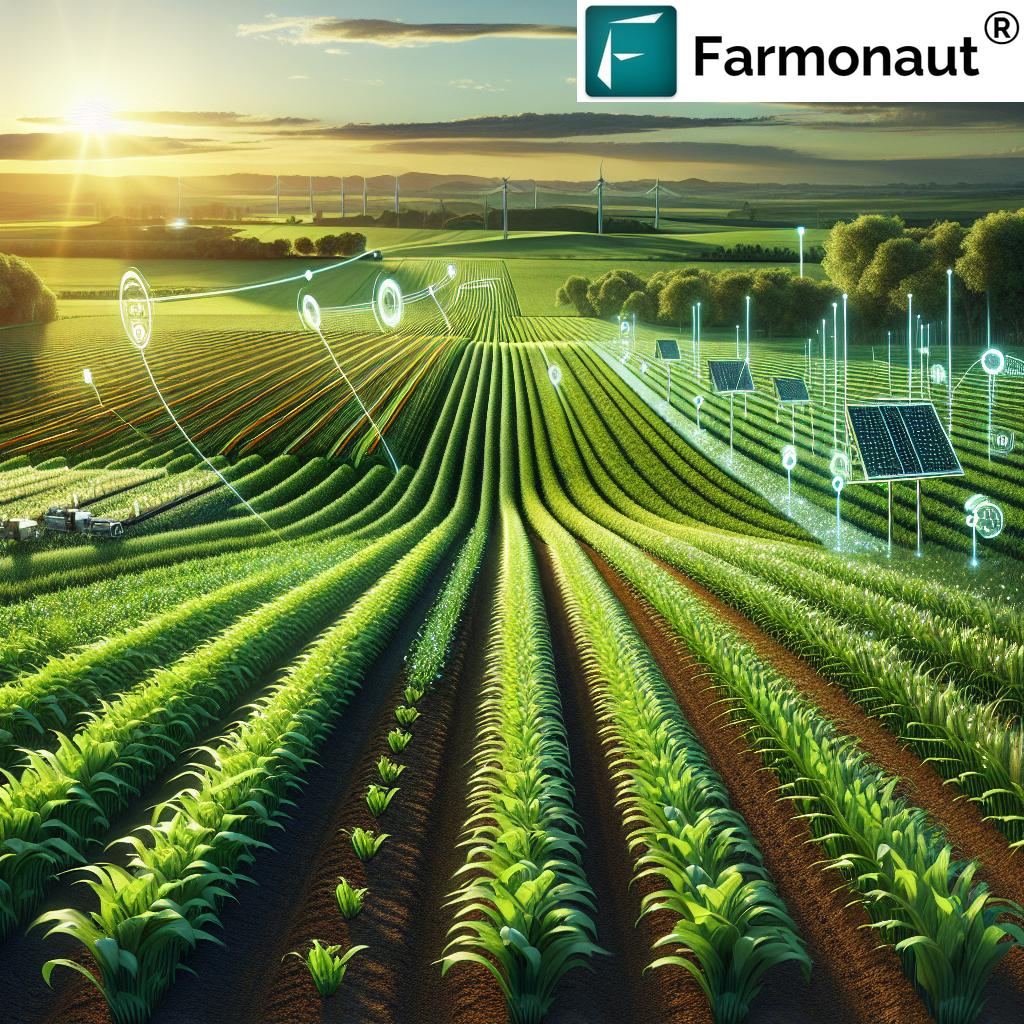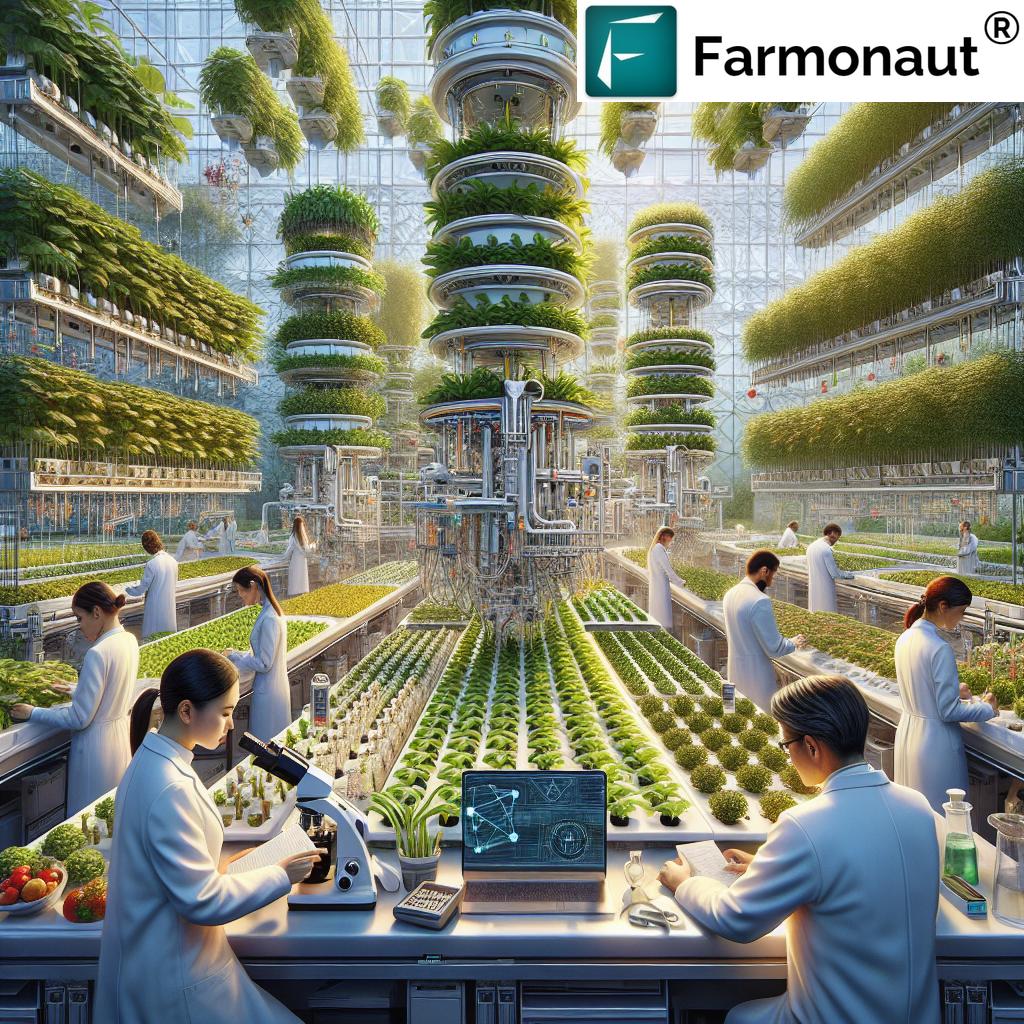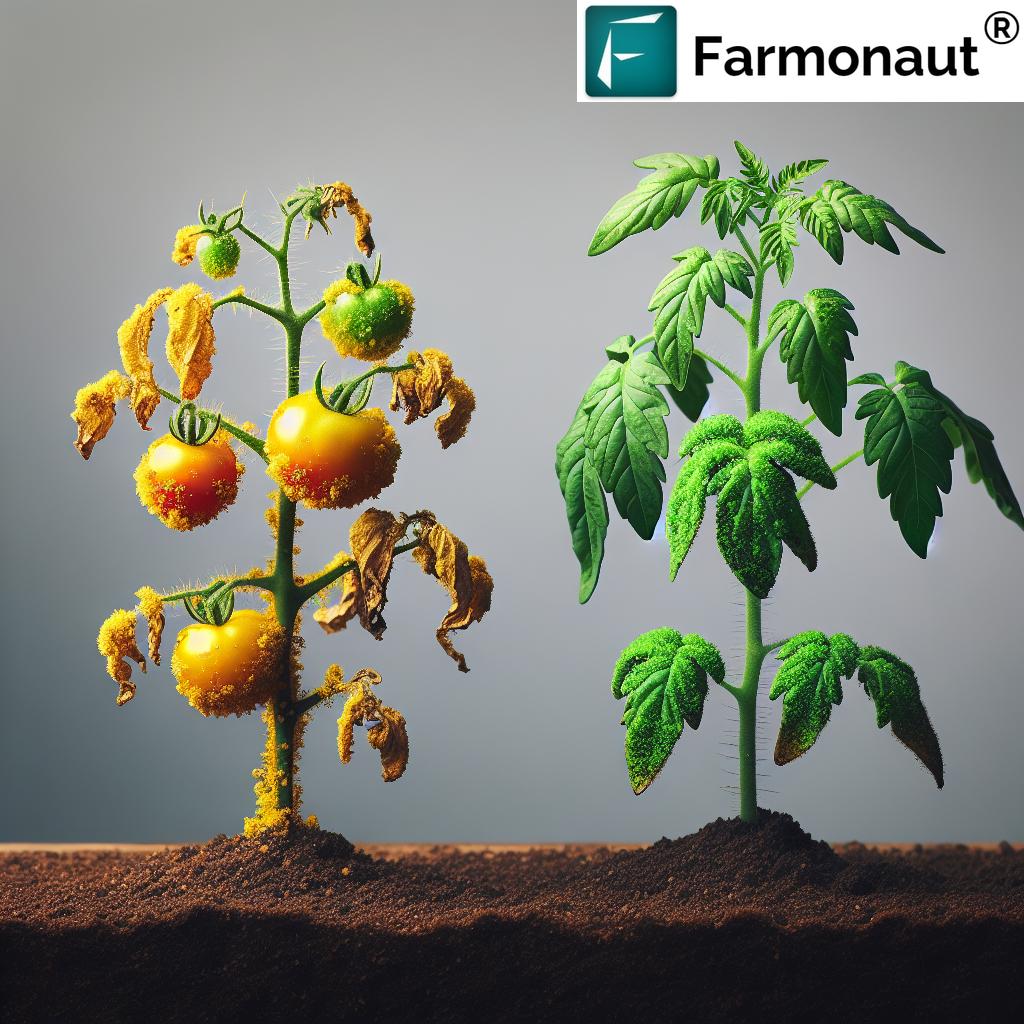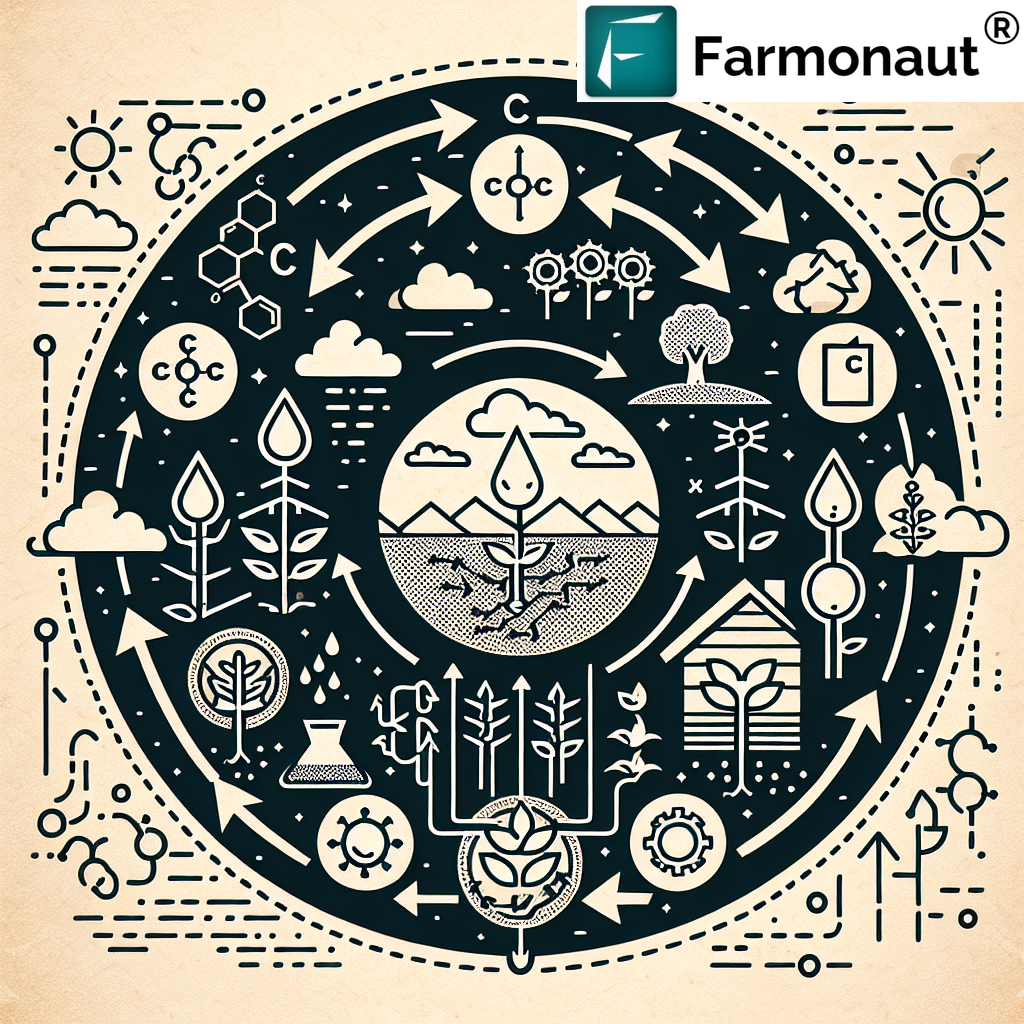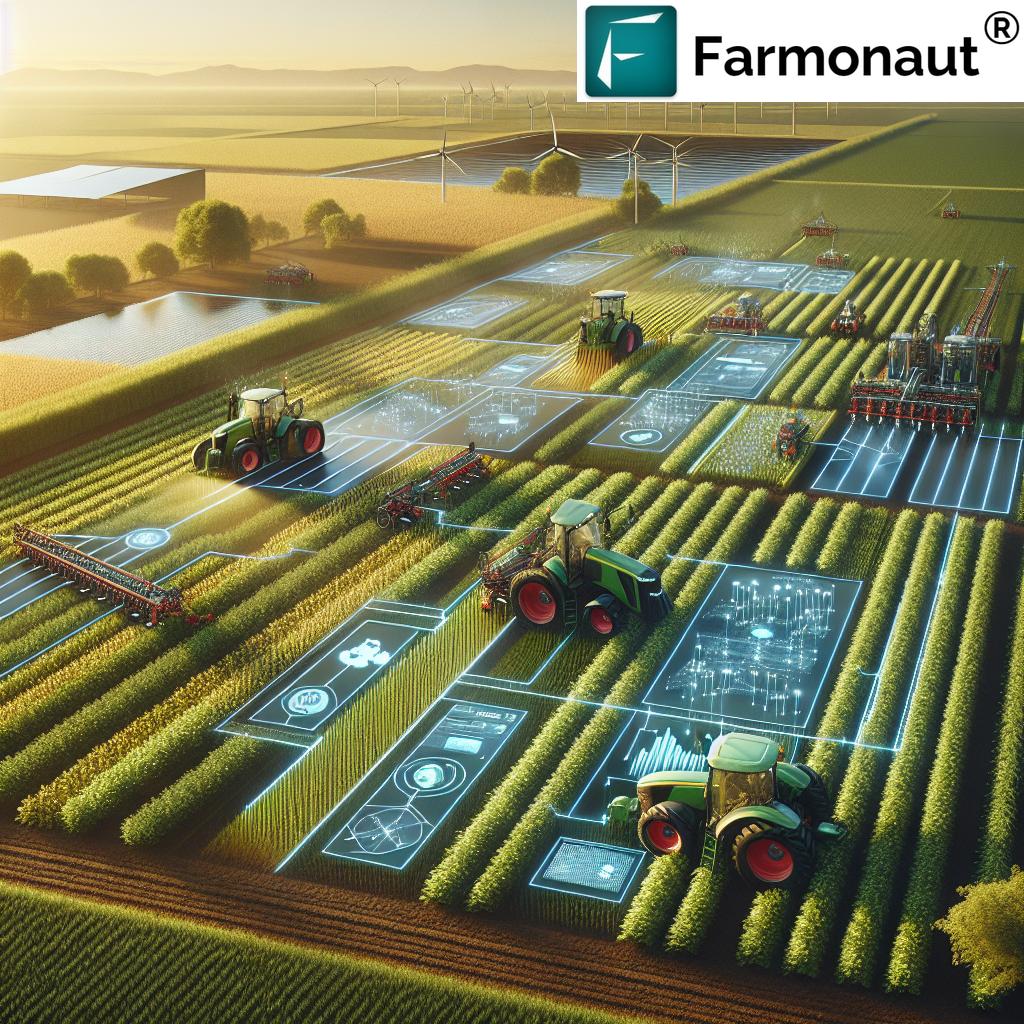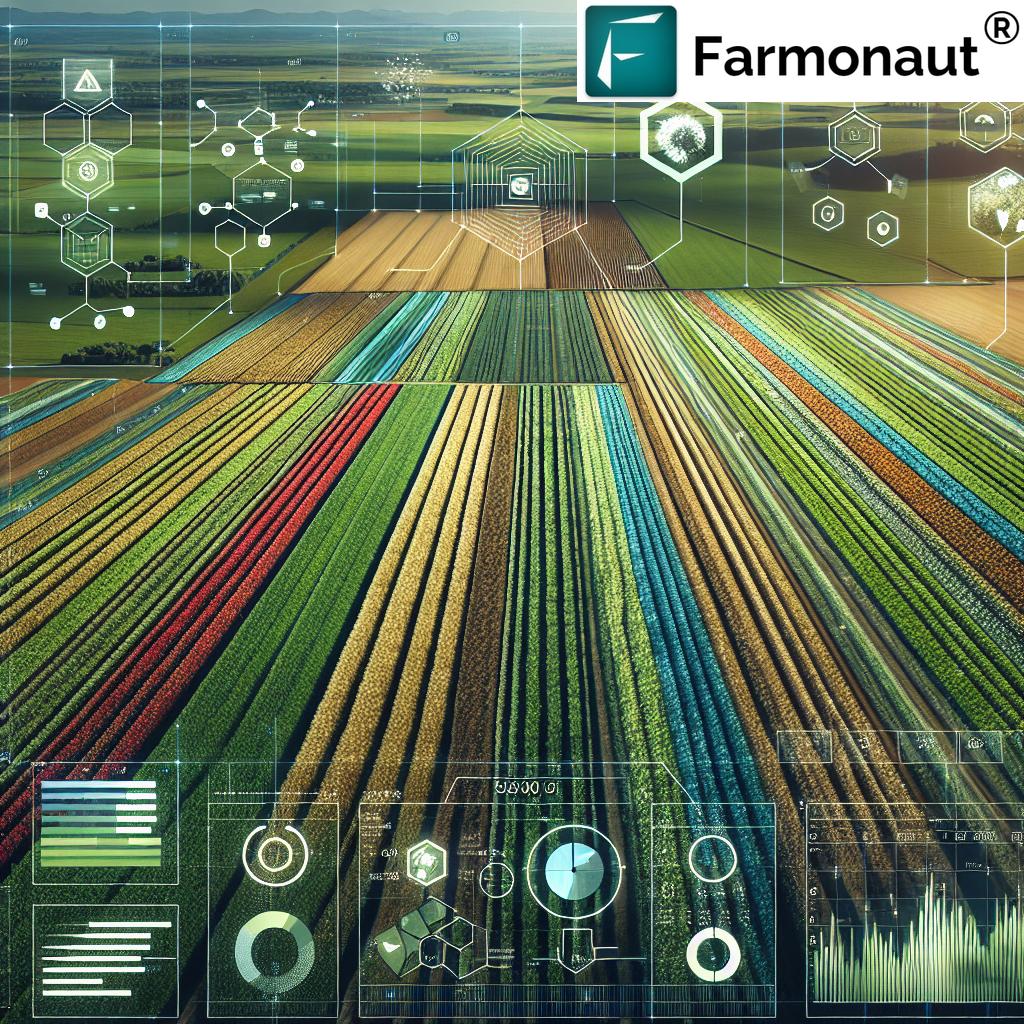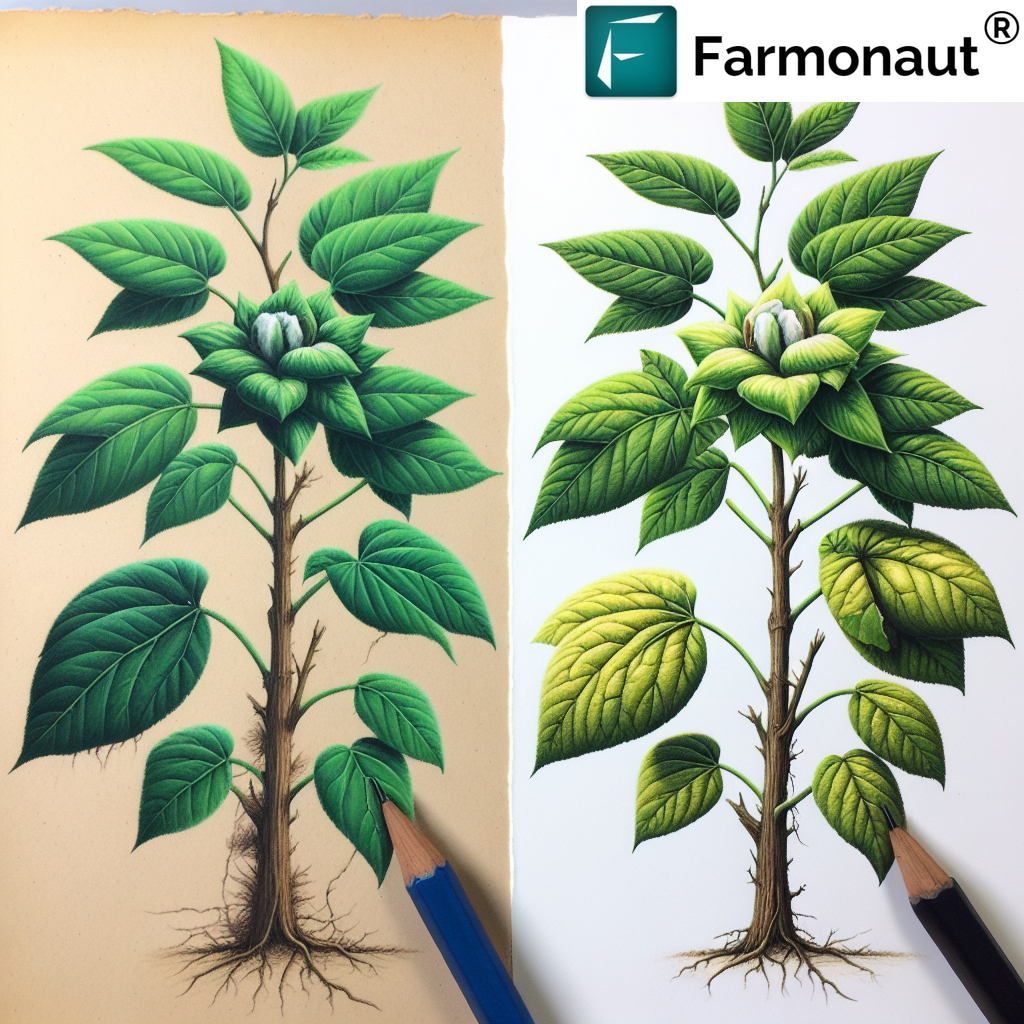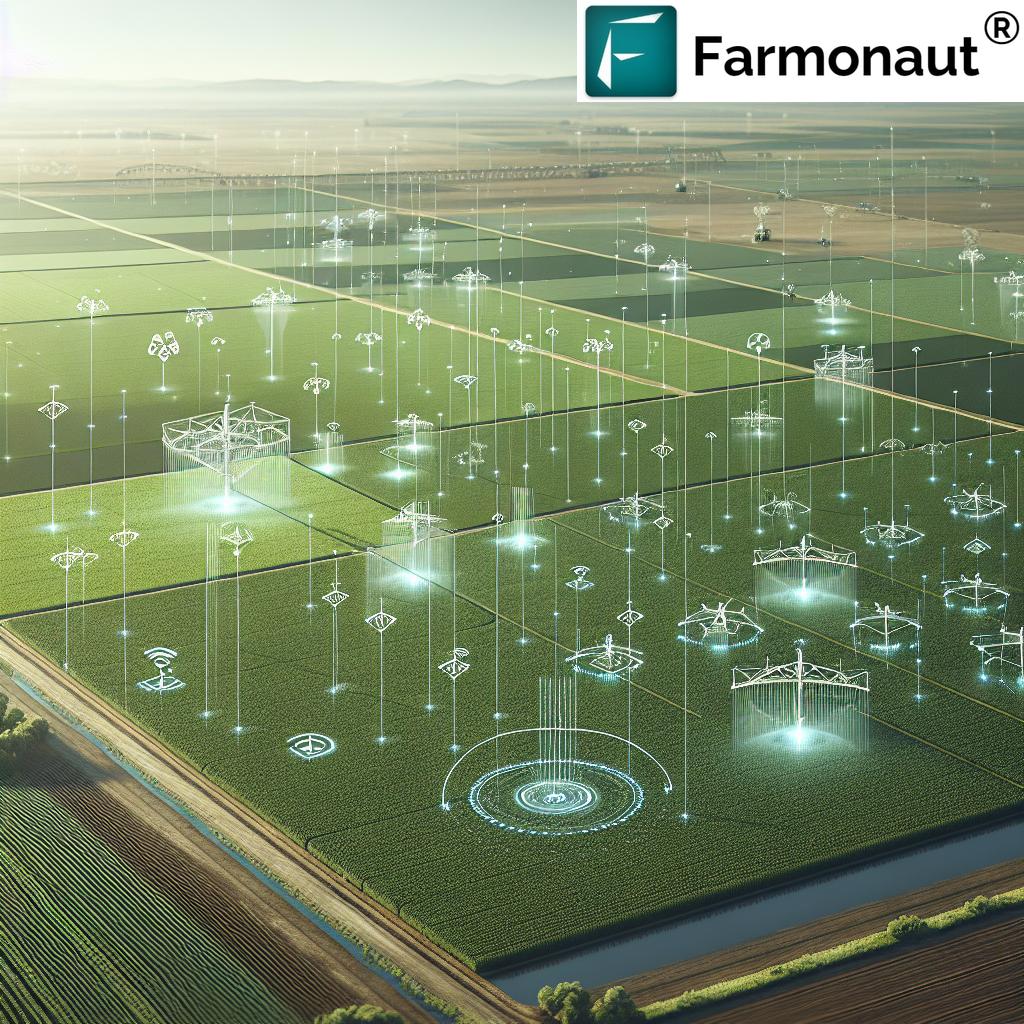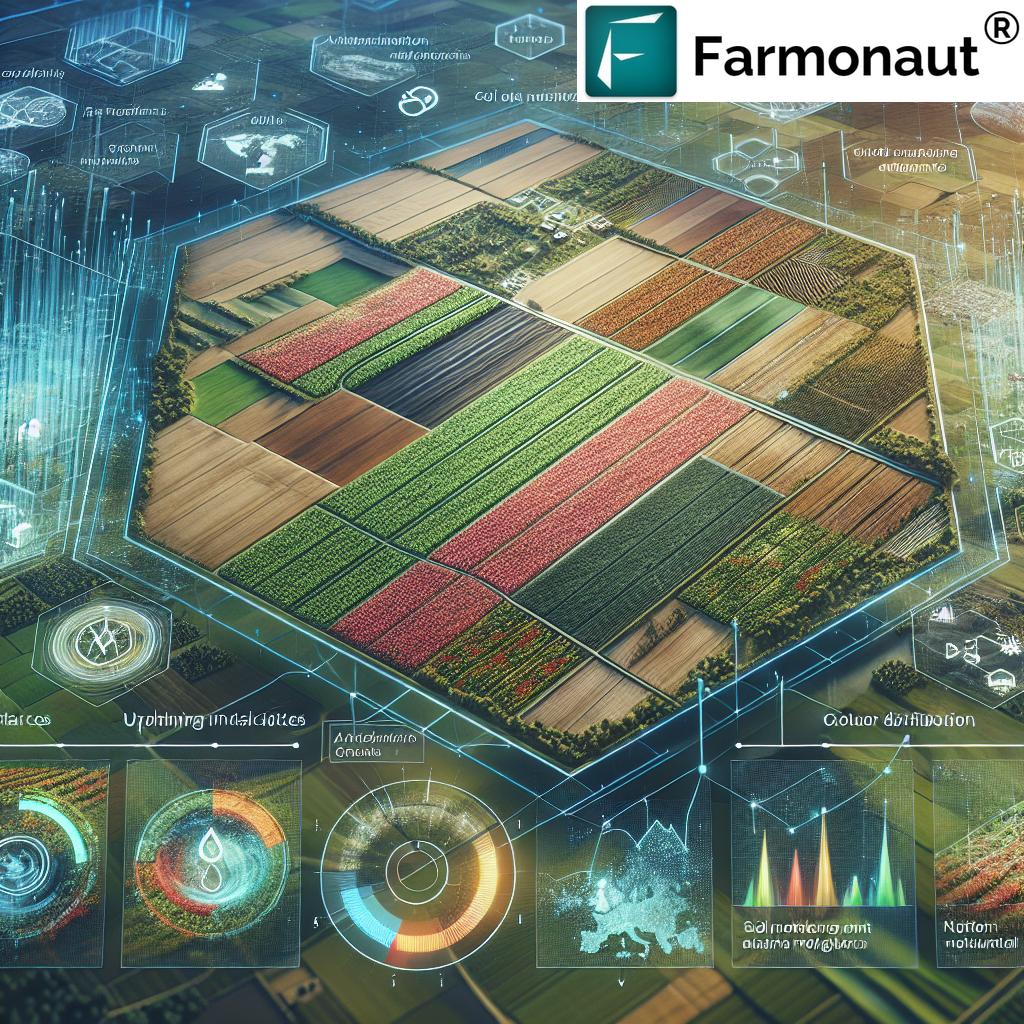Innovation in Agriculture: 10 Shocking Yield Secrets!
- Introduction: The Need for Innovation in Agriculture
- Trivia Breaks
- The Top 10 Shocking Yield Secrets
- 1. Precision Agriculture
- 2. Controlled-Environment Agriculture (CEA)
- 3. Agrivoltaics
- 4. Nanotechnology in Agriculture
- 5. Artificial Intelligence and Machine Learning
- 6. Blockchain in Agriculture
- 7. Robotics and Automation in Farming
- 8. Microbial Fertilizers
- 9. Integrated Pest Management (IPM)
- 10. Smart Soil Health Measurement Tools
- Comparison Table of Innovative Agricultural Practices and Their Yield Improvements
- Farmonaut’s Role in Precision Agriculture & Technology Innovation
- Major Challenges and Future Directions
- Farmonaut Subscription Plans
- Frequently Asked Questions (“FAQ”)
- Conclusion
“Precision agriculture can increase crop yields by up to 20% while reducing input costs by 15%.”
Introduction: The Need for Innovation in Agriculture
As we stand at the forefront of the 21st century, innovation in agriculture has become not just a buzzword but an urgent necessity. With the global population expected to surpass 9 billion by 2050, food production must increase dramatically—without further straining our planet’s precious resources. Meanwhile, climate change, unpredictable weather, shrinking arable land, and mounting input costs make traditional farming methods unsustainable.
We need bold, science-driven solutions to boost productivity, maintain soil and environmental health, and ensure farm profitability. Fortunately, a new wave of agricultural technology innovations—from precision agriculture systems to microbial fertilizers and data-driven advisory tools—are changing the way we farm.
In this extensive guide, we uncover 10 shocking yield secrets underpinning agriculture’s modern transformation. We’ll show how they:
- Deliver higher yields and profitability
- Reduce environmental impact and waste
- Empower farmers with actionable data and analytics
- Make sustainable farming accessible globally
- Support rural prosperity and food security
Let’s explore how these groundbreaking technologies and practices are reshaping the agricultural sector and making sustainable, efficient, and transparent food production possible.
“Sustainable farming practices have helped cut water usage in agriculture by nearly 30% in the last decade.”
The Top 10 Shocking Yield Secrets in Agriculture
1. Precision Agriculture: Harnessing Data for Smarter Farming
Precision agriculture is revolutionizing our approach to farming by leveraging cutting-edge technologies such as GPS, remote sensing, drones, multispectral imaging, advanced data analytics, and satellite imagery to monitor and manage field variability with unparalleled accuracy.
- Satellite and drone imagery enable us to assess crop health and identify potential issues like pest infestations and diseases early.
- Variable-rate application tools allow for optimized resource application—fertilizers, pesticides, and water are applied exactly where they’re needed, minimizing waste and environmental impact.
- Real-time, location-specific data helps us monitor the health of every crop in the field and make data-backed decisions to enhance yields and sustainability.
Why it matters: Precision agriculture can boost productivity by up to 20% and decrease input costs around 15%, empowering both smallholder farmers and industrial-scale operations.
For those looking to leverage satellite analytics without the hardware barriers, the Farmonaut platform delivers affordable, accessible precision analytics—from real-time crop health maps to soil moisture monitoring—on any device.
2. Controlled-Environment Agriculture (CEA): Growing Beyond Seasons
Controlled-environment agriculture (CEA) covers innovative systems such as vertical farming and advanced hydroponics, where crops thrive within tightly controlled environments that regulate light, temperature, and humidity.
- CEA is designed for year-round production, increasing food security regardless of climate or geography, and is especially valuable in urban and peri-urban areas.
- By minimizing exposure to pests and diseases, CEA significantly reduces reliance on chemical pesticides.
- Water usage drops dramatically—hydroponics can use up to 95% less water than traditional soil-based farming, making CEA one of the most sustainable farming practices today.
In a world of soaring transportation costs and carbon footprints, producing high-quality crops in controlled indoor systems slashes delivery times and improves freshness for urban consumers. CEA truly redefines how—and where—we can produce food.
3. Agrivoltaics: Harvesting Sunlight Twice
Agrivoltaics is the practice of co-locating solar panels and agricultural production on the same plot of land. This dual-use system solves two challenges at once:
- Solar panels generate renewable energy, contributing to a sustainable energy mix.
- Simultaneously, shade-loving or heat-sensitive crops (like tomatoes, greens, and berries) benefit from improved microclimates created beneath the panels—reduced temperatures and less water evaporation.
Not only does agrivoltaics reduce water usage and energy costs, but certain crops have shown stable or even improved yields under elevated panels. It’s a game-changer for farms aiming to maximize every square meter.
Looking to calculate your farm’s environmental impact? Discover Farmonaut’s carbon footprinting tool—a simple way to track and optimize your agricultural emissions profile.
4. Nanotechnology in Agriculture: Precision at the Nanoscale
Nanotechnology is unlocking next-generation solutions for carbon-smart, sustainable farming practices. Here’s how nanotechnology in agriculture is making an impact:
- Nano fertilizers deliver nutrients in smaller, more precisely controlled doses, reducing chemical waste and improving nutrient uptake efficiency for plants.
- Nanosensors planted throughout the field allow us to monitor soil health, moisture, and even detect pathogens or chemical residues in real-time.
By enabling precision control, reducing waste, and supporting sustainable crop management, nanotechnology is set to be a vital tool for future-focused farmers.
5. Artificial Intelligence and Machine Learning: Agriculture Gets Smart
The rise of artificial intelligence (AI) and machine learning is giving farmers unprecedented analytical power:
- Predictive analytics harness weather, satellite, and market data to assess harvest windows, optimize planting dates, and make climate-resilient decisions.
- AI-powered advisory systems (like Farmonaut’s Jeevn AI) provide real-time advice on resource management, fertilizer prescription, and pest alerts, personalized for every field and crop type.
- Computer vision and AI-based pest detection tools enable rapid intervention—reducing the need for chemical pesticides and improving yields.
The result? Faster, more informed decisions that improve efficiency, cut costs, and minimize environmental impact.
Farmonaut’s Jeevn AI feature utilizes AI, satellite, and weather data, bringing advanced analytics to every phone. Learn more about the technology on the Farmonaut homepage.
Are you building farm apps or agri-data solutions? Farmonaut’s satellite API and developer docs let developers tap directly into actionable satellite and weather feeds.
6. Blockchain in Agriculture: Traceability & Transparency from Farm to Table
Leveraging blockchain technology in agriculture ensures every step of the food’s journey—from seed to supermarket shelf—is immutable and transparent. Here’s how blockchain in agriculture delivers value:
- Provides an unalterable record of product traceability, provenance, and certifications. This combats fraud, builds consumer trust, and supports compliance with food safety standards.
- Streamlines supply chain management by reducing errors, paperwork, and transaction times between farmers, suppliers, and processors.
- Connects consumers directly with farm-level data, ensuring the authenticity and sustainability of their food choices.
Explore how your business can assure supply chain transparency—visit Farmonaut’s blockchain-based traceability solutions.
7. Robotics and Automation in Farming: The New Workforce
Robotics in farming is addressing critical labor shortages and unlocking radical new levels of efficiency and precision:
- Autonomous tractors, planting drones, and robotic harvesters can work around the clock, performing repetitive, high-precision tasks with minimal oversight.
- Weeding and spraying robots (integrated with AI) identify weeds and pests and target them without harming crops, minimizing pesticide usage and chemical drift.
- Robotics solutions significantly reduce human error and boost productivity—especially helpful for large-scale and high-value crop operations.
Managing fleets of machines efficiently is critical. Check out Farmonaut’s agricultural fleet management tools for smarter and safer agricultural machinery oversight.
8. Microbial Fertilizers: Nature’s Power for Higher Yields
Microbial fertilizers are changing the game for sustainable agriculture. These fertilizers harness beneficial bacteria and fungi that:
- Boost nutrient availability and uptake for plants, reducing dependence on synthetic fertilizers.
- Promote healthy soil biology, improve structure, and increase water retention.
- Cut greenhouse gas emissions significantly compared to traditional fertilization.
Research has shown yield increases of 10-30% in legumes and other crops when using the right microbial blends. It’s a sustainable step forward that addresses productivity, environmental resilience, and soil health.
9. Integrated Pest Management (IPM): Smarter Pest Control
Integrated pest management, or IPM, is the backbone of sustainable pest control:
- We combine biological (predatory insects, biocontrol agents), physical (traps, barriers), and targeted chemical methods for a holistic management system.
- This approach optimizes control efficacy while reducing the risk of resistance and environmental contamination.
- IPM promotes on-farm biodiversity and ensures that only the necessary amount of pesticide is used, supporting sustainability and food safety goals.
Integrating IPM means fewer chemicals, healthier soils, and better long-term yields.
10. Smart Soil Health Measurement Tools: The Foundation of Yield
The backbone of fertile land is healthy soil. Modern soil health testing tools give us instant, actionable insights:
- Handheld and IoT-enabled sensors deliver quick, accurate testing of pH, organic matter, nutrient levels, and contamination—sometimes in as little as five minutes.
- This helps farmers assess when, what, and how much to apply for optimal crop growth.
- Quick diagnostics cut downtime, inform decision-making, and drive sustainable farming methods.
Strong soil health is essential for every harvest. Tools that bring data to the field are transforming how we monitor, manage, and optimize production.
Comparison Table of Innovative Agricultural Practices and Their Yield Improvements
| Innovation/Practice | Description | Estimated Yield Improvement (%) | Environmental Benefit | Adoption Cost (Estimated) |
|---|---|---|---|---|
| Precision Agriculture (Satellite & Drone) | Remote field & crop monitoring, variable input application | 10–20% | Reduces chemical & water wastage | Low–Medium (Farmonaut) |
| Controlled-Environment Agriculture (CEA) | Hydroponics, vertical farms; enclosed controlled conditions | 20–30% | Dramatic water savings; low chemicals | High |
| Agrivoltaics | Dual-use land with solar panels & crops | 5–15% | Lower water loss, clean energy | Medium–High |
| Nanotechnology | Nano fertilizers & sensors for targeted delivery/data | 8–20% | Minimizes chemical runoff | Medium |
| AI-Driven Advisory Tools | Personalized, AI-powered crop & farm recommendations | 10–18% | Optimizes input/resource use | Low–Medium (Jeevn AI) |
| Blockchain Traceability | Tracks agri-products across the chain | N/A (Quality & Trust) | Fraud reduction, supply efficiency | Low–Medium (Farmonaut) |
| Robotics and Automation | Robotic weeding, planting, and harvest systems | 10–25% | Minimizes labor, chemical use | High |
| Microbial Fertilizers | Beneficial microbes boost nutrient uptake | 10–30% | Enhances soil health, cuts GHG | Low–Medium |
| Integrated Pest Management (IPM) | Combines biological & reduced-chemical controls | 5–15% | Reduces pesticide residues | Low–Medium |
| Smart Soil Testing Tools | Instant, field-based soil diagnostics | 5–12% | Supports optimal fertilization | Low |
“Precision agriculture can increase crop yields by up to 20% while reducing input costs by 15%.”
Farmonaut’s Role in Precision Agriculture & Tech-Driven Solutions
Farmonaut is at the heart of the evolution in precision agriculture and agricultural technology innovations. By bringing advanced satellite imagery, AI, and blockchain to the fingertips of farmers and agribusinesses, Farmonaut bridges the gap between traditional farming practices and data-driven, digital agriculture.
- Satellite Crop Monitoring: Farmonaut’s platform offers multispectral satellite crop health analyses; monitor vegetation (NDVI), soil moisture, optimize irrigation, and detect issues before yields drop.
- AI and Machine Learning: Through Jeevn AI, Farmonaut’s AI advisory system provides personalized weather insights, risk alerts, and input recommendations based on real-time analytics.
- Blockchain Traceability: Boost brand trust and supply chain transparency with blockchain-based traceability for food, fiber, and more.
- Fleet and Resource Management: Improve machine safety and reduce running costs with intelligent fleet tracking for agribusinesses.
- Carbon Footprinting: Sustainably manage and report emissions using Farmonaut’s carbon footprinting module—meet environmental regulations and lower your impact.
- Large Scale & Corporate Farm Management: Manage planting, field operations, and inputs across thousands of hectares with Farmonaut’s large-scale management app.
- Crop Loans and Insurance Verification: Streamline farmer access to financial services with satellite-verified crop monitoring. Learn more on Farmonaut’s crop loan and insurance page.
Farmonaut operates on a flexible, subscription-based model, accessible via mobile, web, and API. The focus: making precision agriculture affordable, scalable, and impactful for all farms—big or small—across the globe.
Challenges and The Future of Agriculture Innovation
Despite the promise these innovations bring, several challenges persist across the agricultural sector:
- Access & Affordability: High upfront costs for advanced systems (like robotics or vertical farms) may limit adoption for smallholders.
- Technical Skills: Integrating new technologies requires investment in farmer training and digital literacy.
- Connectivity Gaps: Reliable internet and electricity are critical for IoT-enabled, data-driven farming, yet may be lacking in rural areas.
- Data Privacy Concerns: As agricultural analytics and smart devices proliferate, data ownership, security, and privacy must be robustly managed.
- Regulatory and Market Barriers: Clear regulations and market incentives are necessary to encourage sustainable, tech-driven agricultural transitions worldwide.
The path forward relies on:
- Investment in infrastructure and research
- Supportive government and institutional policies
- Inclusive education to empower farmers at all scales
- The integration of sustainable, resilient practices at every step
By embracing technology-enabled agriculture, we can achieve productivity gains while protecting our climate, water, and soil for future generations.
Frequently Asked Questions (FAQ)
What is precision agriculture and how does it help farmers?
Precision agriculture uses data-driven technologies like satellites, drones, and AI analytics to monitor field variability and optimize resource application. It boosts yield, reduces input costs, and minimizes environmental impact by ensuring every input—water, fertilizer, pesticide—is accurately delivered where and when it’s needed.
How can smallholder farmers access advanced agricultural technology?
Innovations like Farmonaut’s satellite crop monitoring and AI-powered advisory are offered through affordable subscription models on smartphones, tablets, and desktop. This makes cutting-edge precision farming accessible globally, regardless of farm size.
What is the main benefit of blockchain in agriculture?
Blockchain in agriculture guarantees transparent, immutable product traceability from farm to consumer, curbing fraud and ensuring supply chain trust and efficiency.
Are microbial fertilizers better for soil health?
Yes! By harnessing beneficial microbes, microbial fertilizers bolster nutrient availability, reduce chemical runoff, and improve soil structure—key for long-term yields and sustainability.
Is Farmonaut a supplier of fertilizers or farm machinery?
No, Farmonaut is not a supplier or manufacturer. Instead, it is a technology platform that delivers satellite monitoring, AI-driven advice, blockchain traceability, and farm management tools—empowering the agricultural sector with timely insights to support better farming decisions.
How do smart soil testing tools boost productivity?
By delivering instant, field-level analysis of key soil parameters, these tools help farmers fine-tune nutrient management, avoid over-fertilization, and optimize crop growth conditions for better yields.
Conclusion: Shaping the Future of Sustainable Agriculture
Innovation in agriculture is about more than just higher crop yields. It’s about feeding our global population efficiently, profitably, and safely—while restoring the land, minimizing climate impact, and building systems that can withstand shocks.
Embracing precision agriculture, sustainable farming practices, and technology innovations gives every farmer—from India’s smallholders to global agribusiness giants—the tools to thrive. Platforms like Farmonaut make science, data, and innovation accessible to all, integrating seamlessly with traditional approaches for a truly sustainable future.
By working together—armed with knowledge, tech, and a stewardship mindset—we can create an agricultural sector that sustains both people and planet for generations to come.

